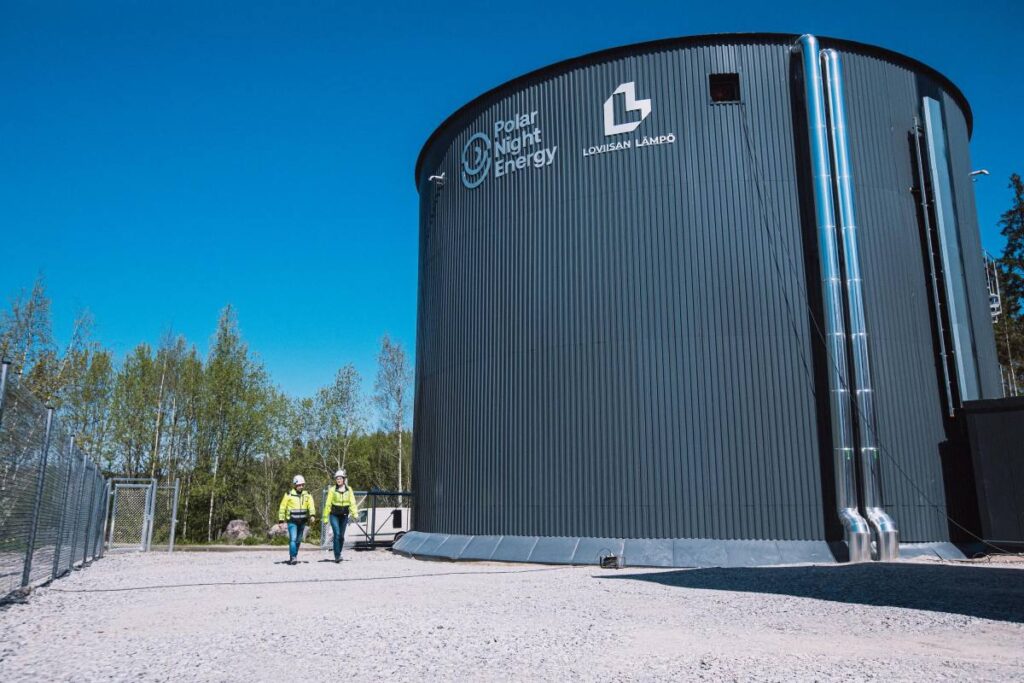It doesn’t look like much, but Finland recently flipped the switch on the world’s largest sand-based battery.
Yes, sand.
A sand battery is a type of thermal energy storage system that uses sand or crushed rock to store heat. Electricity — typically from renewable sources — is used to heat the sand. That stored heat can later be used for various ends, including to warm buildings.
The economics are compelling, and it’s hard to get any cheaper than the crushed soapstone now housed inside an insulated silo in the small town of Pornainen. The soapstone was basically trash — discarded from a Finnish fireplace maker.
Though it might not be as visually impressive as a large lithium-ion battery pack, the 2,000 metric tons of pulverized rock inside the 49-foot-wide silo promises to slash Pornainen’s carbon emissions, helping the town to eliminate costly oil that currently helps power the town’s district heating network.
Like many Scandinavian towns, Pornainen operates a central boiler that heats water for homes and buildings around town. Polar Night’s battery can store 1,000 megawatt-hours of heat for weeks at a time, enough for a week’s worth of heating in the chilly Finnish winter. From storage to recovery, only about 10% to 15% of the heat is lost, and the temperature at the outlet can be up to 400 degrees Celsius.
The town’s district heating system also relies on burning wood chips, and the sand battery will reduce that consumption by about 60%, according to Polar Night. Heat from the battery could also generate electricity, though the process would sacrifice some efficiency.
As renewables have gotten cheaper, interest in thermal batteries has grown. Beyond Polar Night, numerous startups are pursuing thermal batteries. Scotland-based Sunamp is building one that relies on the same material that gives salt-and-vinegar potato chips their flavor. Electrified Thermal Solutions, TechCrunch’s Startup Battlefield 2023 runner-up, has created a type of brick that can produce heat approaching 2,000 degrees Celsius. And Fourth Power is making graphite blocks that store electricity as 2,400 degree Celsius heat.
Pornainen’s battery is charged using electricity from the grid, and its massive storage capacity allows the operator to draw power when it’s cheapest. Finland’s grid is mostly renewables (43%) and nuclear (26%), meaning its electricity is pretty clean. It’s also the cheapest in Europe at just under €0.08 per kilowatt-hour — less than half the EU average.
Polar Night didn’t disclose the project’s cost, though the raw materials are cheap and the structure itself isn’t particularly complex. A much smaller prototype built a few years ago cost around $25 per kilowatt-hour of storage, the company estimated at the time. It’s likely the new version is cheaper. Lithium-ion batteries cost around $115 per kilowatt-hour.

